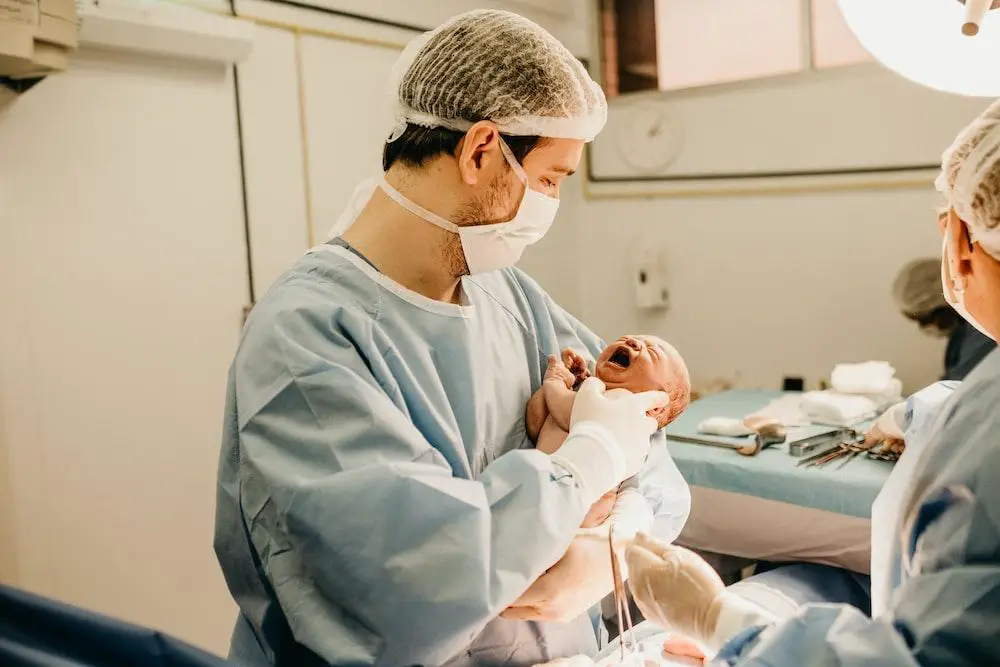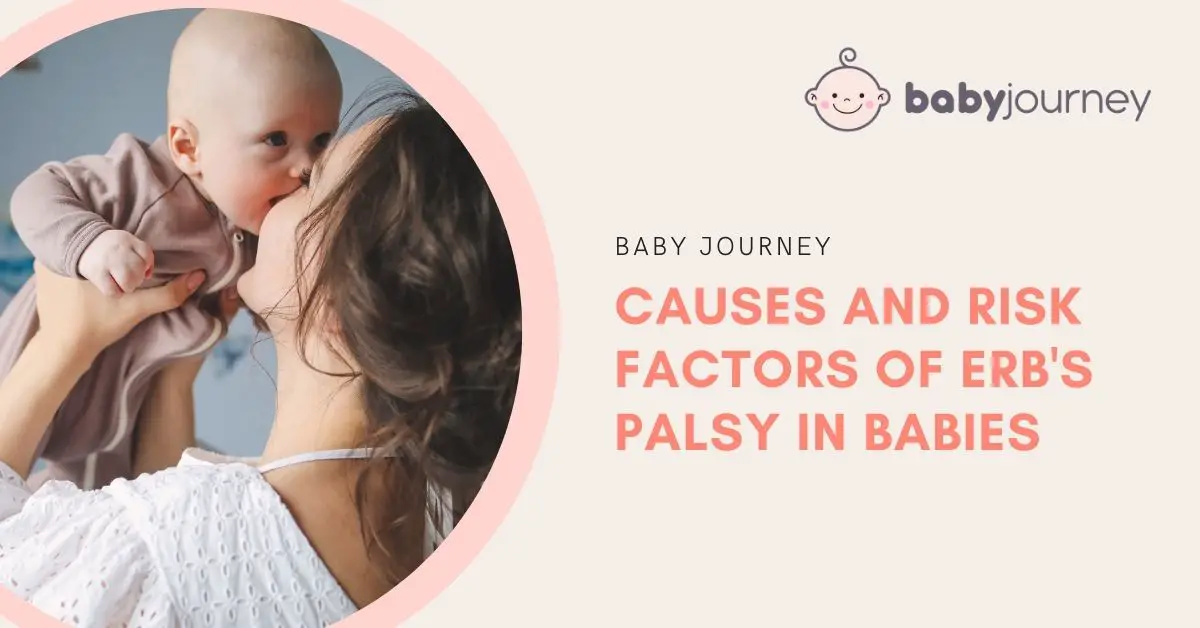In this article we’ll discuss what Erb’s Palsy is, including causes and risk factors of it in babies.
Babies with Erb’s palsy are born with a type of injury to the brachial plexus, which affects the muscles in the shoulder and arm. Symptoms of this condition include weakness or loss of feeling along one side of the body, as well as difficulty moving the arms, hands, and fingers.
Although it is not always possible to prevent Erb’s palsy, it is important to be aware of the causes and risk factors in order to anticipate any issues that may arise after birth. In this blog post, we will examine these causes and risk factors, so you know what to expect when expecting.
What is Erb’s palsy? Overview of Erb’s Palsy

Photo by Jonathan Borba
Erb’s palsy, also known as brachial plexus palsy, is a birth injury that affects the arm and shoulder of a newborn. Erb’s palsy in newborn occurs when the nerves in the neck are stretched or damaged during delivery and can be experienced in a range of severities. These range from mild paralysis which heals after a few days or weeks, to permanent damage resulting in a lifelong disability.
Symptoms of Erb’s palsy can include limited movement in the affected arm, decreased sensation in the affected area, and weakness or paralysis of some muscles. Treatment options for Erb’s palsy include physical therapy and surgery to help restore function to the affected limb.
In some cases, full recovery may not be possible. With proper treatment and care however, most people with Erb’s palsy can lead healthy lives with minimal limitations on their activities.
Causes of Erb’s Palsy
The most common cause of Erb’s palsy is an overly long or difficult labour process which puts pressure on the baby’s head, neck, and shoulders as they pass through the birth canal. Other possible Erb’s palsy causes include:
- Improper use of forceps during delivery
- A breech presentation
- Shoulder dystocia (a condition where one shoulder gets stuck behind the mother’s pelvic bone)
- Trauma to an infant’s brachial plexus nerves due to medical negligence
It is also more likely to occur in larger babies who have limited space for movement within their mother’s uterus. In rare cases, it may be caused by genetic disorders such as Down Syndrome or muscular dystrophy.

Photo by Andy Quezada
Risk Factors for Developing Erb’s Palsy
There are several risk factors that could increase the likelihood of developing Erb’s Palsy, other than the causes already listed. Mothers who have diabetes and those who require long labour processes may be more likely to be at risk of having a child with Erb’s Palsy.
The condition is also more apparent in obese mothers, as babies of overweight mothers tend to be bigger themselves. The bigger the baby, the more risk there may be of experiencing shoulder dystocia.
Fortunately, most cases are mild and will resolve on their own over time. However, some infants may need physical therapy or surgery to fully recover from Erb’s Palsy.
Diagnosing and Treating Erb’s Palsy in Babies
Diagnosing Erb’s Palsy in infants can be tricky, as the condition and Erb’s palsy symptoms are often misdiagnosed or unrecognised. A child’s doctor will review the medical history of the mother and baby, along with a physical exam to assess muscle strength, range of motion of affected limbs, and the presence of any nerve damage. In some cases, imaging tests such as MRI or ultrasound may be ordered to get a better look at the affected area.
Once Erb’s Palsy is diagnosed, Erb’s palsy treatment usually focuses on physical therapy and stretching to help the baby regain use of the affected arm or hand. Severe cases may require surgery to release the stretched nerve and restore mobility.
Depending on the age and severity of the condition, children may also need splints and braces to help them learn how to use their affected arm. Parents should work with a paediatric physical therapist to determine the best course of action for their child.
In most cases, treatment for Erb’s Palsy will involve physical therapy sessions to strengthen the affected muscles and improve range of motion. As mentioned, some babies may require surgery to reattach the detached nerves or correct any structural damage that may have occurred during delivery.
It is important to remember that early intervention is key when it comes to Erb’s Palsy. The earlier treatment begins, the more successful it will be in helping a child regain mobility and use of their affected arm or hand.
Parents should consult with their child’s paediatrician at the first sign of a weakened or paralysed arm, and be proactive in seeking out treatment options to help reduce the severity of Erb palsy’s symptoms.

Photo by Solen Feyissa
Prevention Strategies to Reduce the Risk of Developing Erb’s Palsy is Best
Preventing Erb’s Palsy from occurring begins with understanding the risk factors associated with it, including motherhood obesity. One of the most important steps to take is to ensure that medical personnel involved in the delivery are aware of any risk factors. This includes making sure that the baby’s size and position in the womb is monitored throughout the labour and delivery process.
Ultimately, though, it’s important to remember that giving birth always involves some level of risk, so any injuries that occur should not be blamed on the parents. If you are victim to a birth injury, be sure to consult your doctor, and seek legal advice so that you can get the support you need to recover.
Please be advised that this article is for general informational purposes only, and should not be used as a substitute for advice from a trained medical professional. Be sure to consult a medical professional or healthcare provider if you’re seeking medical advice, diagnoses, or treatment. We are not liable for risks or issues associated with using or acting upon the information on this site.

 PARENTING TIPS
PARENTING TIPS PREGNANCY
PREGNANCY BABY CARE
BABY CARE TODDLERS
TODDLERS TEENS
TEENS HEALTH CARE
HEALTH CARE ACTIVITIES & CRAFTS
ACTIVITIES & CRAFTS


